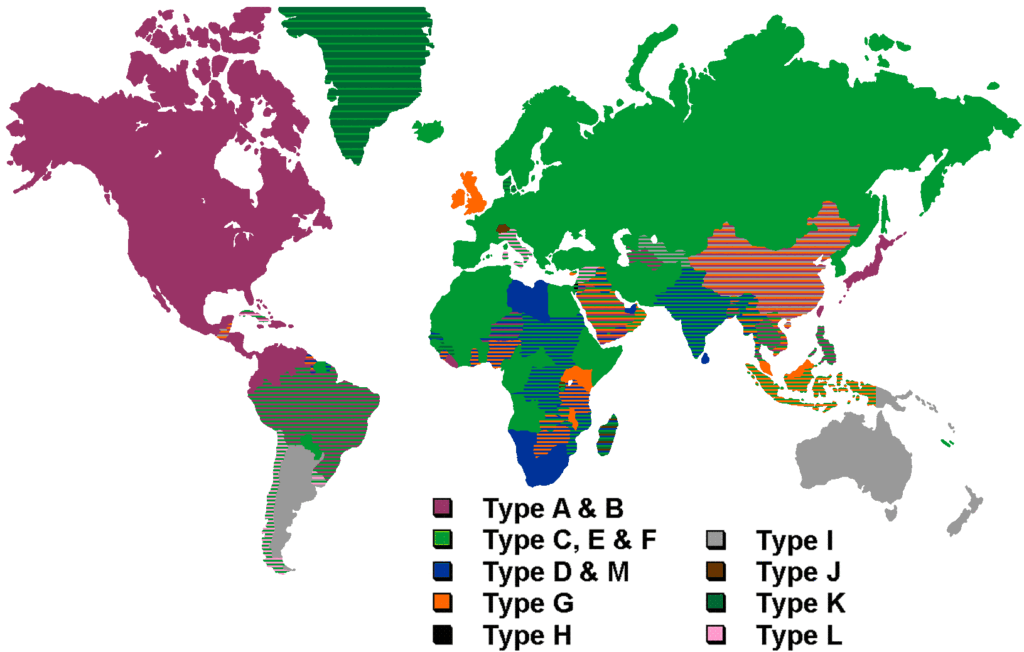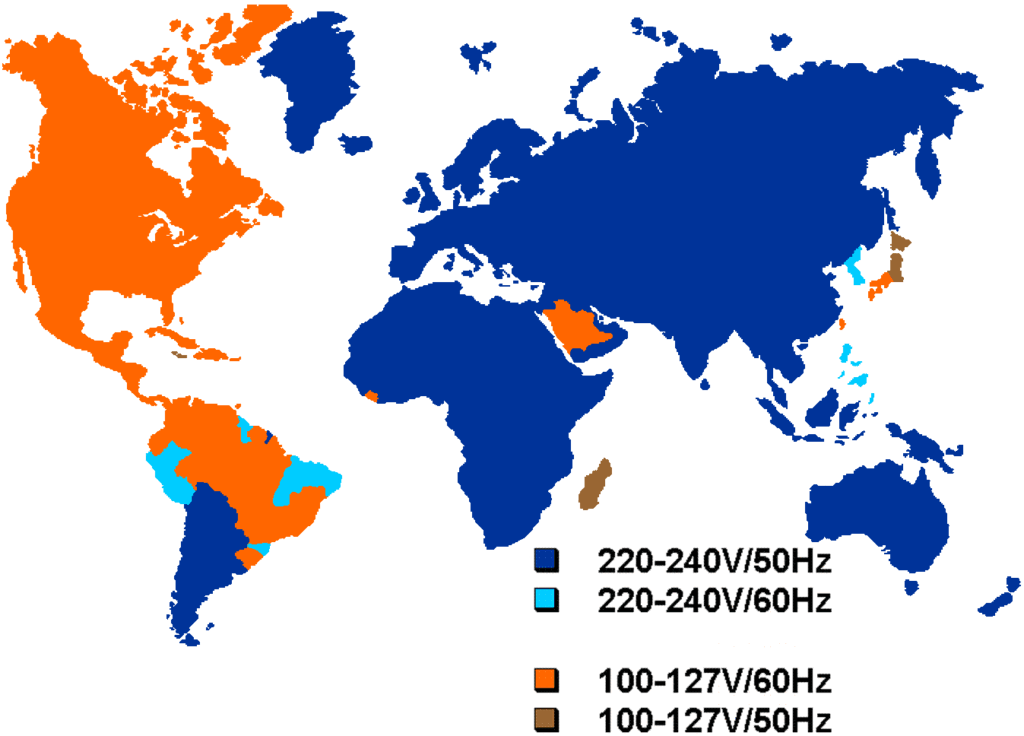FAQs:
Rules of Thumb for Appliance Voltage Compatibility
It’s important to understand that there’s no such thing as a “standard” electrical input/output for electrical appliances. The information below is just a general guideline, and it may or may not be correct for your specific brand and model. The only way to know for your specific appliance is to check.
Laptop computer: Usually 100-240V, 50/60Hz, auto-switching. A travel plug adapter works just fine all by itself.
Desktop computer: Usually switchable between 110-120V and 220-240V via a small switch on the back of the computer, near the cooling fan. A travel plug adapter will work fine as long as the voltage switch is set to the proper position.
Cell phone: Usually comes with a charger that is 100-240V compatible, but that is by no means always the case. It’s very important to check the charger. If it says “100-240V” then a plug adapter will work fine. If not, the easiest solution is probably to contact your cell phone provider and buy a new charger which is multi-voltage compatible, and attach the appropriate plug adapter to the multi-voltage charger.
PDA/Blackberry/etc: Almost always comes with a charger that is 100-240V compatible. Simply attach a plug adapter to the charger’s plug.
Digital camera: Chargers are usually 100-240V compatible. A plug adapter is usually sufficient.
Hair dryer/curling iron/flat iron/etc: Most U.S. and Canadian hair care appliances are only compatible with 110-120V, though some higher-end models can be switched between voltages. If your brand/model has a voltage switch, then a plug adapter is sufficient. Otherwise, the appliance will require that the voltage be changed. Since hair dryers and other hair care appliances usually don’t contain any electronic circuits, a voltage converter is usually more convenient than a step-down transformer.
Electric shaver: Most U.S. and Canadian corded electric shavers are only compatible with 110-120V. Cordless/rechargeable shavers often come with chargers that are 100-240V compatible.
CPAP Machine: 50/50 shot, there’s no telling. A lot of CPAP machines are built with DC motors because they’re quieter. DC motors plug into AC power sources, of course, through an AC adapter. Since AC adapters are converting an AC voltage to a smaller DC voltage anyway, the AC input voltage is often irrelevant. If the AC adapter says “100-240V” then a plug adapter will work just fine. But this is by no means true of all CPAP machines. Some brands/models use AC motors and are only compatible with 110-120V. If that’s true of yours, then theoretically a voltage transformer + a plug adapter would at least allow it to power up. But in practice, the difference in frequency (Hz) may negatively affect the machine’s performance. For most appliances, the effect is negligible. But for a CPAP machine, we’ve been told that the effect can be significant. The better solution may be to just buy a multi-voltage compatible CPAP machine, rather than to depend on a transformer.
iPod: You’ll have to check the iPod’s charger. There are so many different versions, it’s impossible to keep up with what kind of charger ships with any particular model. If the iPod’s charger says “100-240V” then a plug adapter is sufficient. Otherwise, if it says “120V” then you’ll need a voltage transformer. Or you’ll need to replace the iPod’s charger with one that is 100-240V compatible.
Audio/Video Equipment, including Televisions, Stereo Components, VCRs, DVD Players, Video game consoles (X-Box, Wii, Playstation, etc.): Most equipment of this type is purposely manufactured to be localized to a particular country or geographic region. It’s all part of the “war on piracy” and for the most part, it’s not worth the trouble to bring this kind of item abroad. Even if you want to fight the battle of getting power to the device, there will probably be compatibility/standards issues related to the audio/video signals, scan rates, etc. These are beyond the scope of our business, and we don’t claim to be authorities on those matters. Television broadcast standards are different (NTSC vs. PAL), audio broadcast standards are different, CD and DVD media are usually “region-locked” to a particular geographic area (i.e. European DVDs/game discs won’t play on most North American DVD players/game consoles) and a host of other issues beyond simply getting power to the device. If you’re dead set on bringing A/V equipment to another country, you’ll want to consult an A/V specialist.
Power Tools: Most U.S. and Canadian power tools are built for 110-120 volts, and will require a step-down voltage transformer as well as a plug adapter. However, some cordless/rechargeable power tools ship with chargers which are 100-240V compatible. Check your charger. If it says “100-240V” then a plug adapter is sufficient.
Air conditioners, refrigerators: Appliances which contain a compressor require a special type of transformer called a “3-tap transformer” because in order for the compressor to function properly, the output voltage supplied by the transformer needs to be slightly adjusted up or down to compensate for the difference in frequency (Hz.)
Clothes dryers and Electric ranges: North American clothes dryers and ranges usually connect to a specialized 2-phase household electrical circuit. You’ll want to consult an electrician.








